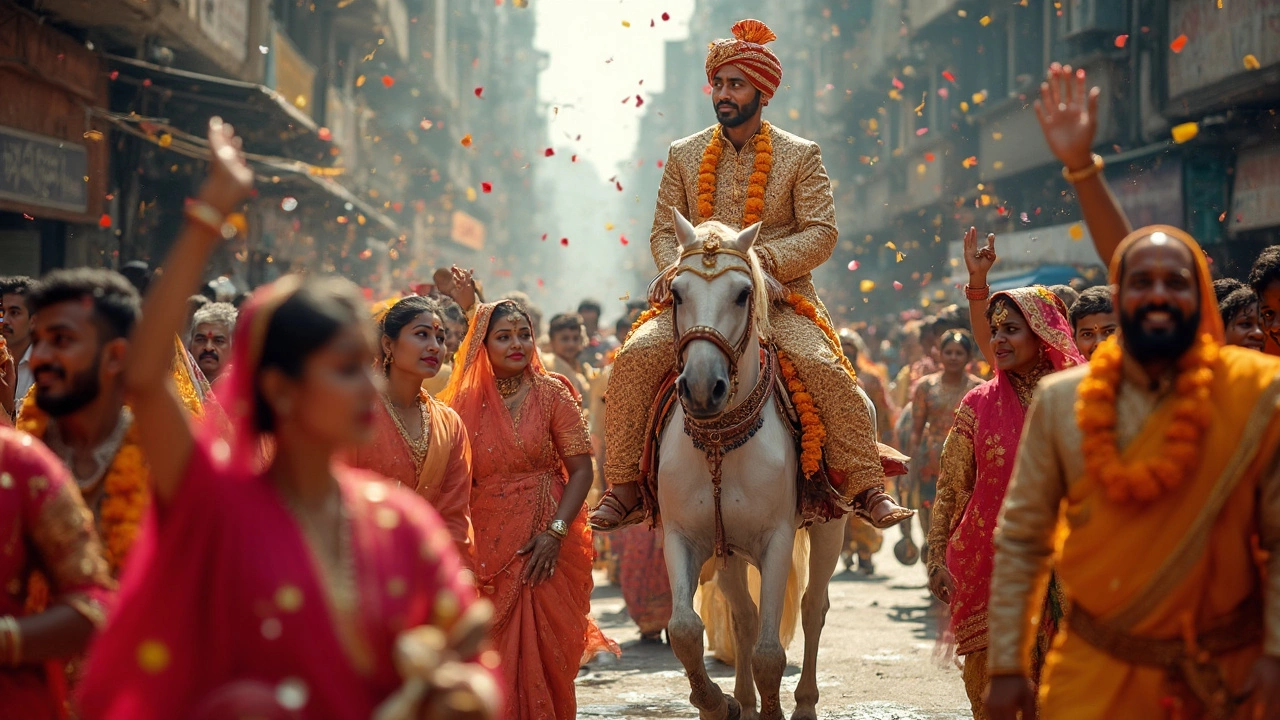Wedding Customs in Tamil Culture: Traditions, Rituals, and Meaning
When you think of a Tamil wedding, a vibrant, multi-day celebration rooted in ancient Dravidian traditions, spiritual symbolism, and deep family bonds. Also known as Tamil marriage rituals, it’s not just a union of two people—it’s a merging of lineages, beliefs, and community values. Unlike Western weddings that often focus on a single day, Tamil weddings unfold over several days, each step carrying meaning passed down for centuries.
These customs are built around key rituals like Kanyadaanam, the formal giving away of the bride by her parents, symbolizing trust and spiritual responsibility, and Mangalya Dharanam, the tying of the sacred thread, or thaali, around the bride’s neck—a moment that legally and spiritually seals the marriage. Then there’s Saptapadi, the seven steps taken together by the couple, each step representing a vow for life: nourishment, strength, prosperity, wisdom, progeny, health, and lifelong friendship. These aren’t performances—they’re sacred acts, often led by a priest who chants Vedic mantras in Tamil or Sanskrit, depending on the family’s tradition.
Pre-wedding events like Nischayathartham (engagement), Muhurtham (choosing the auspicious time), and Maalai Maatral (exchange of garlands) are just as important. Families prepare specific foods like sweet pongal, coconut rice, and jaggery-based sweets, each chosen for their symbolic meaning. The bride’s attire—typically a silk saree in red or maroon with gold zari work—isn’t just fashion; it’s a statement of cultural identity. Even the jewelry, like the nose ring and bangles, carries ancestral significance.
What makes Tamil weddings stand out is how they blend the spiritual with the social. Music, dance, and storytelling are woven in—like the Karakattam dance performed to honor the goddess Mariamman, or the playful teasing of the groom during Varmala. These aren’t just entertainment; they’re community rituals that reinforce belonging. Even modern Tamil families, whether in Chennai, Coimbatore, or abroad, hold onto these customs because they’re more than tradition—they’re memory, identity, and continuity.
You’ll find variations across regions: in rural Tamil Nadu, weddings might include animal processions or temple-based ceremonies, while urban couples may simplify the timeline but still keep the core rituals. Some families blend Hindu customs with Christian or Muslim practices, especially in mixed communities. But no matter the variation, the heart remains the same: marriage is not just personal—it’s sacred, communal, and deeply rooted in heritage.
Below, you’ll find real stories and deep dives into these customs—from the meaning behind the thaali to how Diwali and Tamil weddings sometimes overlap in ritual timing. Whether you’re planning a wedding, curious about cultural roots, or just exploring Tamil life, these articles give you the truth behind the rituals—not just the surface.
